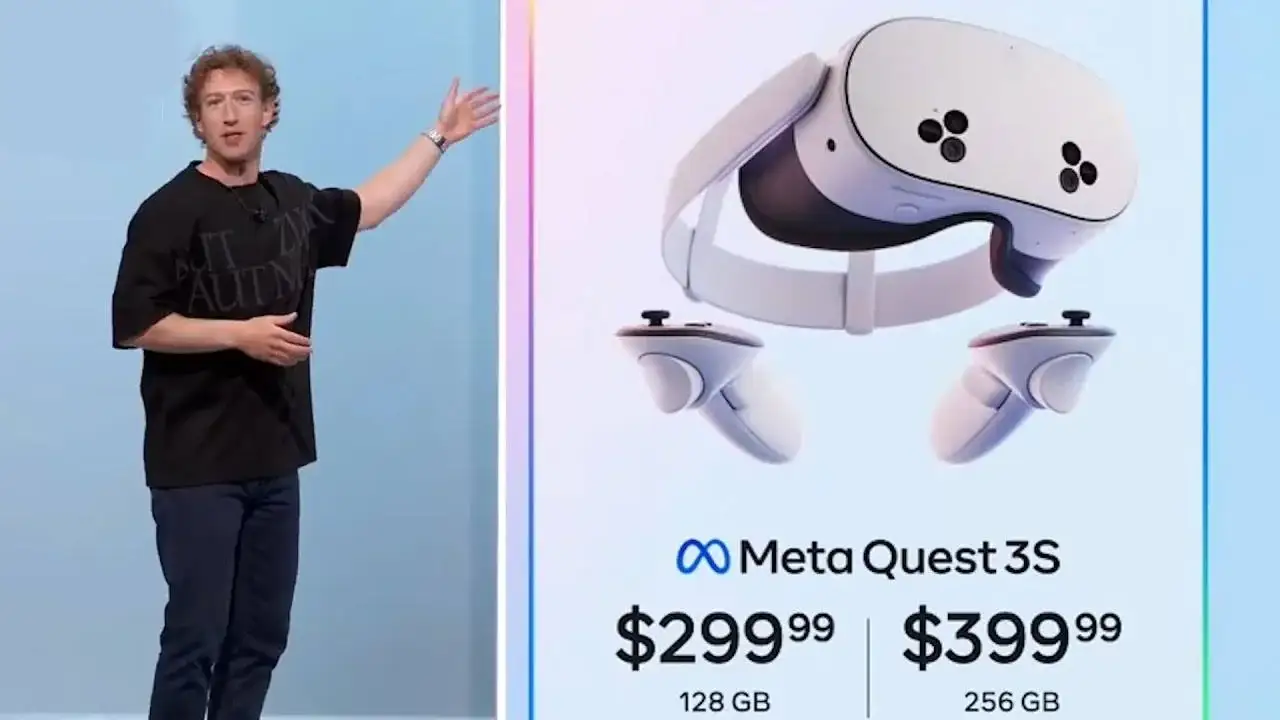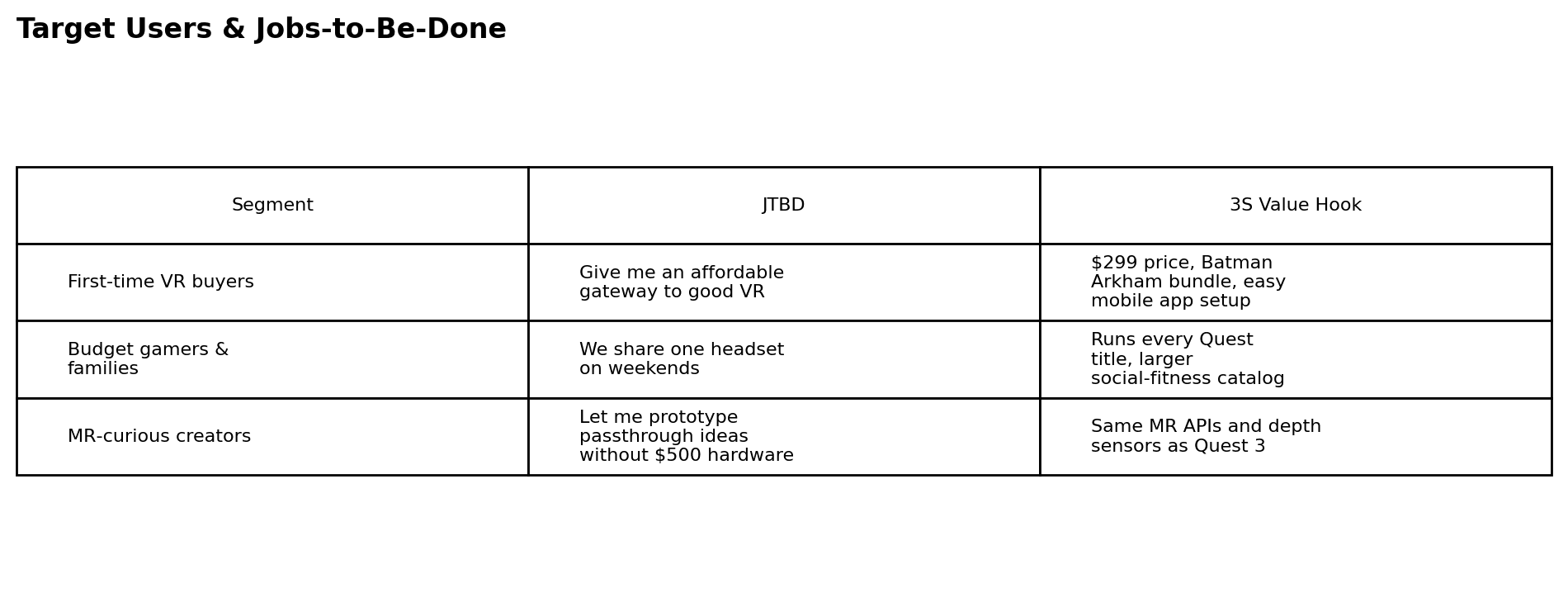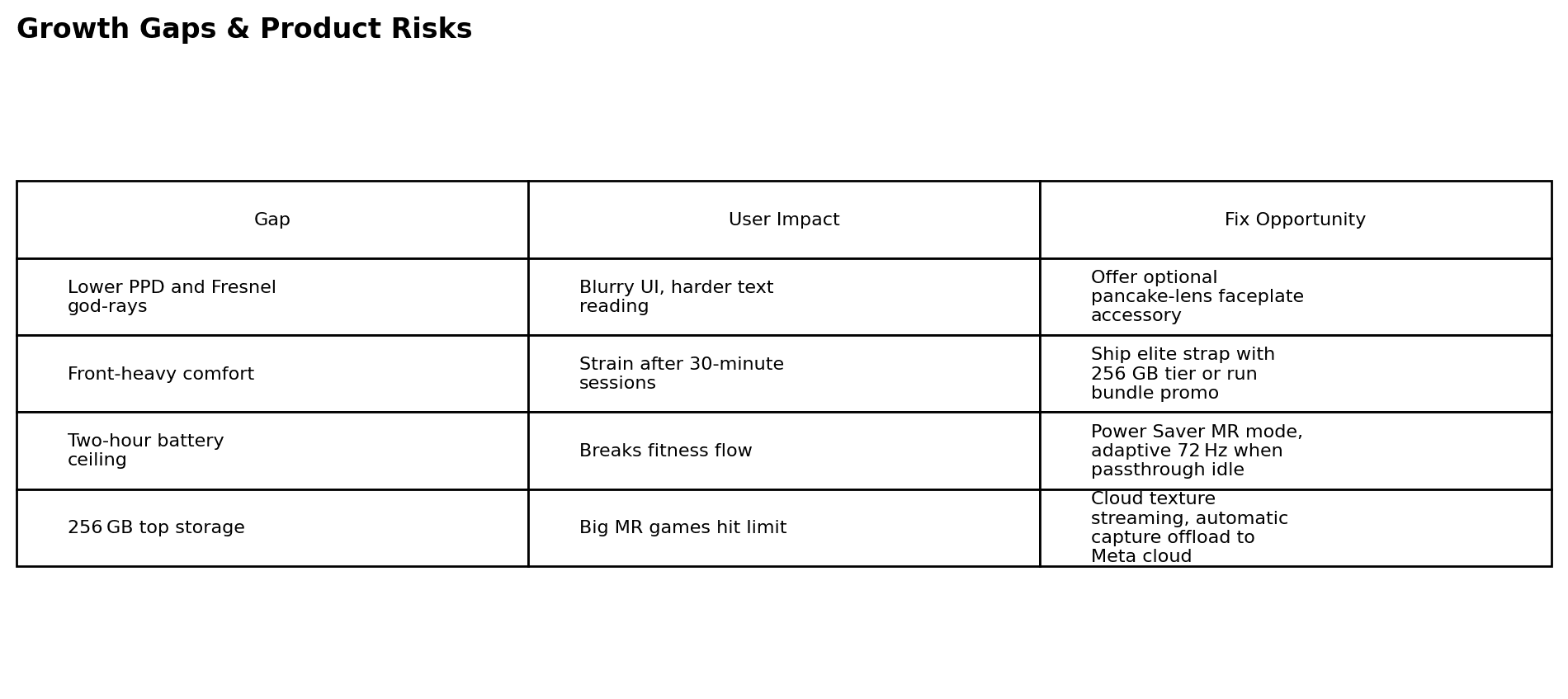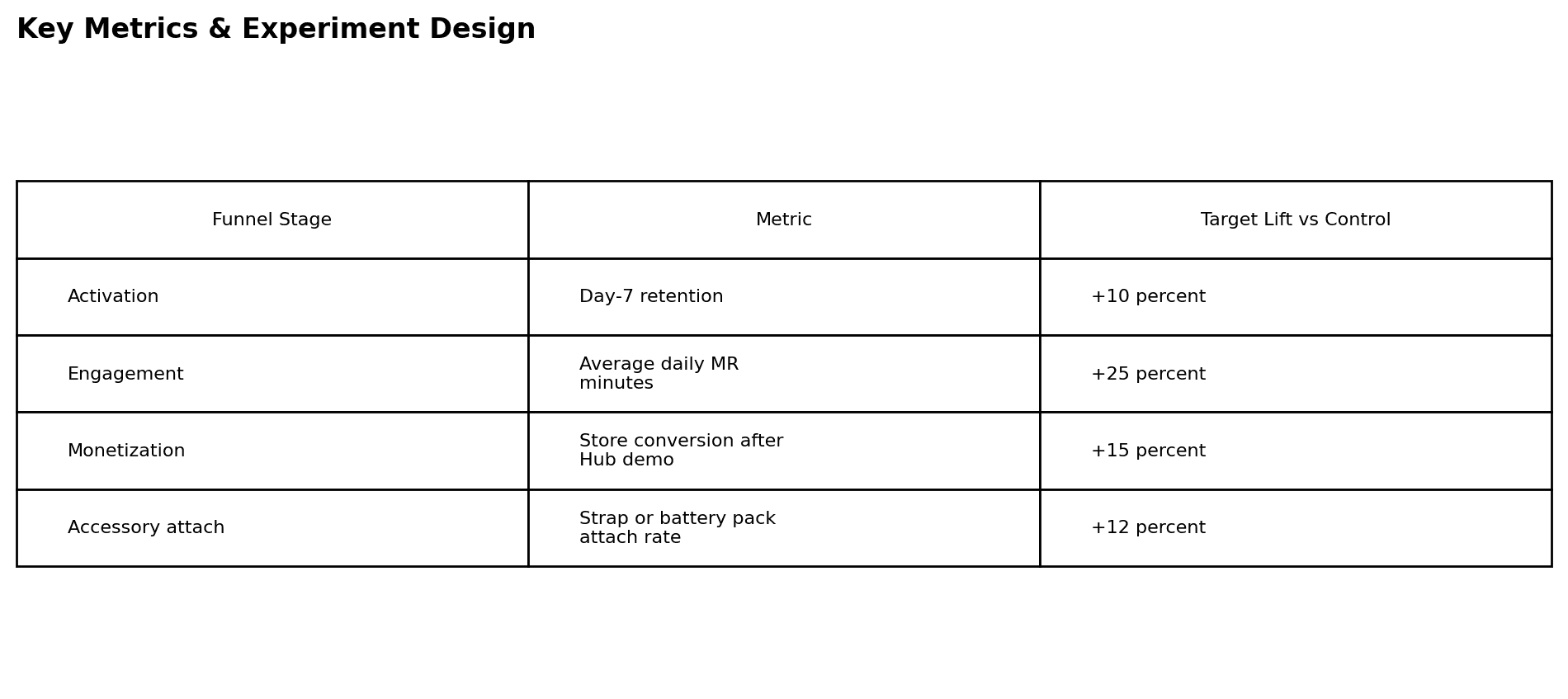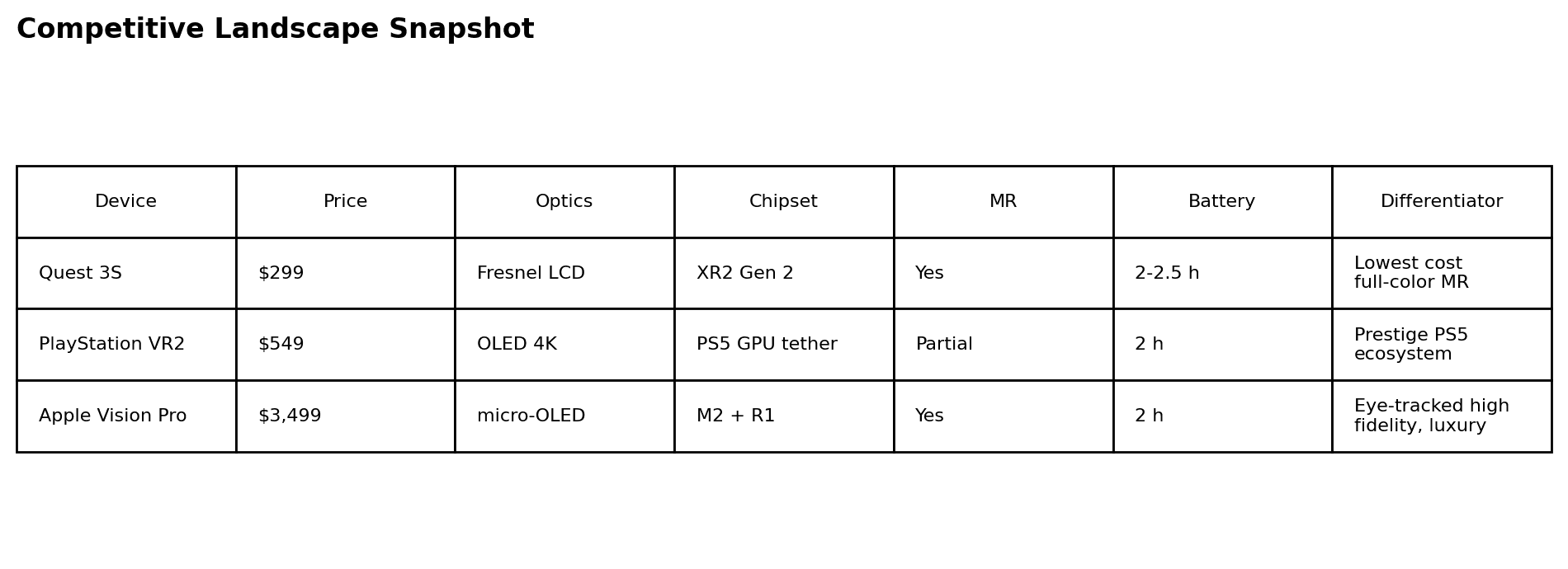Meta Quest 3S : Product Teardown💡
Category: Mixed-reality headset
Platform: Meta Horizon OS + Quest Store
Strategic Focus: Transition consumers from VR novelty to daily MR utility
01 : Quick Snapshot
Spec
Chipset ->
Optics ->
Mixed Reality ->
Battery ->
Detail
Snapdragon XR2 Gen 2 ->
Fresnel LCD (2064×2208 per eye) ->
4 MP full-color passthrough, 18 PPD ->
~2-2.5 hours typical play ->
Why it matters
Same silicon as Quest 3, lowers BOM risk while keeping flagship speed
Reuses Quest 2 panels to hit low price, sacrifices sharp text
Entry-level MR that feels “good enough” for games and demos
Acceptable for casual gaming, still a pain for fitness sessions
02 : Problem Space
VR growth stalled after Quest 2 because consumers faced an awkward trade-off: pay $499 for Quest 3’s color passthrough or keep using dated optics. Meta needed a lower-priced bridge that:
Preserves MR wow factor,
Runs the expanding Quest 3 content library,
Fits holiday-gift budgets around $300.
Quest 3S meets those criteria by re-using Quest 2 lenses and displays while sharing Quest 3 sensors and chipset.
03: Target Users and
Jobs- to-Be-Done
Please click on the picture to zoom in !
04: Product & GTM Strategy
Cost leadership : kept the pricey pancake lenses off the bill of materials, reallocating savings to Snapdragon XR2 Gen 2 performance.
Backward + forward compatibility : any Quest 2 app works out of the box, Quest 3 MR titles also run on 3S, reducing ecosystem fragmentation.
Bundle marketing : launch SKUs packaged Batman Arkham Shadow or Asgard’s Wrath II trial codes to shorten time to first wow moment.
Channel mix : heavy Connect 2024 keynote demo, then TikTok creator seeding program plus Walmart end-cap kiosks ahead of Black Friday.
05: What Meta Got Right
Value-per-dollar king : identical CPU, RAM and sensors to Quest 3 at $200 less, grabbing mainstream headlines.
Immediate content depth : over 500 compatible titles at launch, solving usual “empty store” issue.
Slight battery gain : LCD draws less power than Quest 3’s backlit QD-LCD, adding ~15 percent life.
06: Growth Gaps & Product Risks
Please click on the picture to zoom in !
07 : What I Would Build Next
Feature: MR Discovery Hub
A first-boot space that teaches mixed-reality value through:
Interactive room scan quest, awarding cosmetic home items,
Weekly rotating free MR demos,
Social challenge cards, for example “Beat a friend’s score in First Encounters”.
Goal: lock in a Day-7 habit loop before novelty fades.
08 : Key Metrics & Experiment Design
Please click on the picture to zoom in !
09 : Competitive Landscape Snapshot
Please click on the picture to zoom in !
10 : Marketing Story I Would Tell
“Mixed Reality for Everyone” : hero messaging on affordability and passthrough wonder.
Social proof: Social media creators showing MR fitness in small apartments.
Upgrade path: emphasize accessory ecosystem and Quest 3 game parity to reassure longevity.
